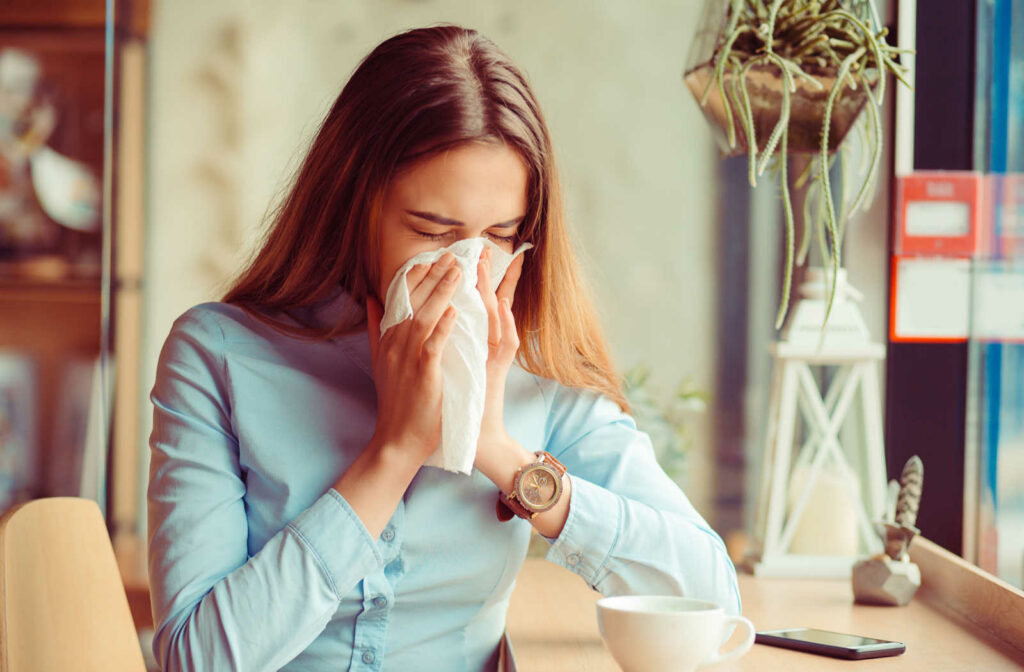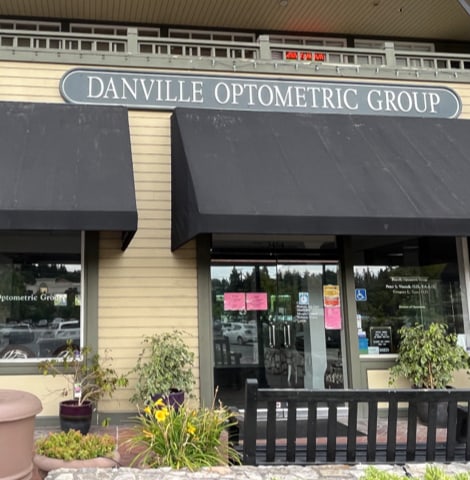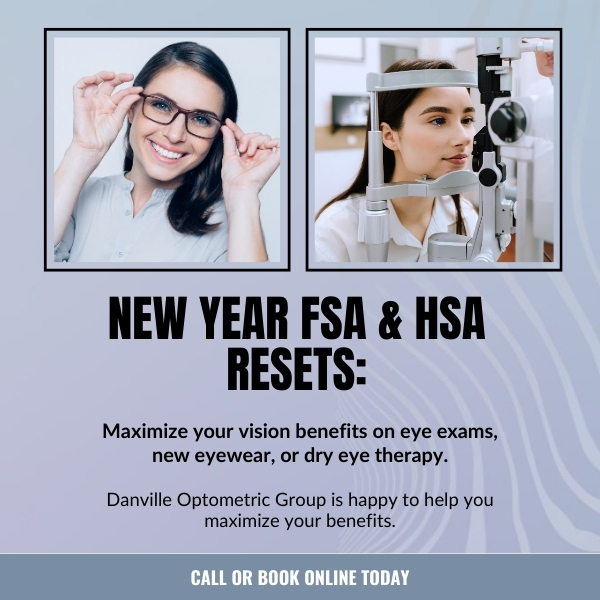If you suffer from allergies, you may already know that the symptoms can be quite frustrating. Sneezing, coughing, and itchy eyes are just a few of the symptoms.
However, did you know that allergies can also cause dry eyes? Allergies can be one of the many factors that contribute to dry eyes. The immune response triggered by allergies can cause inflammation and irritation of the eyes, leading to decreased tear production and increased evaporation of tears.
An eye exam can help detect the early signs of dry eye. Further diagnosis with a dry eye exam helps your eye doctor develop a customized treatment plan specific to your needs.
We dive deeper into the link between allergies and dry eyes, how to recognize the symptoms, and what you can do to find relief.
What Is Dry Eye Disease?
Dry eye disease, also known as dry eye syndrome, is a condition that occurs when your eyes produce insufficient tears or poor-quality tears. Since tears are vital for keeping your eyes lubricated, preventing infections, and maintaining clear vision, dry eyes can cause considerable discomfort.
Symptoms of Dry Eye Disease
Apart from dryness and an uncomfortable feeling in the eyes, you can also experience the following dry eye symptoms:
- Grittiness
- Burning or stinging
- Feeling that something is in your eyes
- Eye redness
- Eye fatigue
- Sensitivity to light
- Blurred vision
- Stringy mucus in and around your eyes
- Watery eyes
- Difficulty wearing contact lenses
- Difficulty driving at night
Causes Of Dry Eye Disease
A healthy tear film consists of water, oil, and mucus. But when there’s an imbalance in the tear film, you don’t produce enough tears, or they evaporate more quickly.
The cause behind dry eye disease includes several factors that affect tear production and evaporation, such as:
- The natural aging process can lead to fewer tears.
- You can produce fewer tears due to hormonal changes, such as during pregnancy or menopause.
- Medications such as antihistamines, decongestants, antidepressants, and medicines for high blood pressure can affect tear production.
- Environmental factors such as wind, smoke, and dry air can increase tear evaporation.
- Underlying medical conditions that can decrease tear production include Sjogren’s syndrome, rheumatoid arthritis, or lupus.
- Meibomian gland dysfunction causes tear evaporation because the oil glands become clogged.

Allergies & Dry Eye Disease
Another cause of dry eyes can be allergies, known as allergic conjunctivitis. Eye allergies can be seasonal or year-round. Allergens can include:
- Dust
- Pollen
- Mold
- Animal dander
- Chemical scents from household detergents or perfume
Taking antihistamines for your allergies can also cause dry eyes. Antihistamines block your body’s response to allergy triggers, thereby reducing symptoms. But they can affect tear production and lead to dry eyes.
Posterior blepharitis or meibomian gland dysfunction is inflammation of the eyelids. It occurs when the oil glands in your eyelids get clogged.
Allergies that cause blepharitis affect the tear film and can lead to dry eyes. While many symptoms of dry eyes and allergies overlap, such as watery, red, and burning eyes, itching is only present in eye allergies.
Treatment for Dry Eye Disease
If you experience dry eye or eye allergy symptoms, visit your eye doctor for an evaluation and treatment recommendations to manage your dry eyes and improve tear quality and quantity. Treatment for dry eyes can include methods to provide relief and treat the underlying cause:
- BlephEx: Uses a handheld device to exfoliate and remove bacteria and debris from the eyelids and helps promote good eyelid hygiene for normal tear production.
- Lascrisert: This is a prescription lubricant inserted into the eye.
- Lid debridement: This method scales the base of the lashes to remove bacteria and debris to improve oil release from the meibomian glands.
- Meibomian gland expression: Involves gently squeezing oil that may be blocking the meibomian glands.
- Prescription eye drops: Used to increase natural tear production in chronic dry eye disease.
- Heat therapy: A specific type of heating pad is used to melt the oil back into its liquid form and can be extremely effective in helping keep the eyes hydrated.
- Punctal plugs: Plugs that prevent fluid from draining from the eyes and helps to keep your eyes moist for longer.
- IPL: Intense pulsed light therapy uses light energy to reduce inflammation in dry eye disease and help produce healthier tear film.
- Nutrition therapy: Omega-3 fatty acids from food and supplements can benefit eye health. Speak to your eye doctor before taking supplements.
How To Prevent Allergies & Dry Eyes
While treatment is available to treat allergies and dry eyes, you can take measures to reduce your exposure or avoid allergens. These can include the following:
- Close your windows when pollen counts are high
- Wear sunglasses outside to keep pollen out of the eyes
- Use a mattress cover to reduce dust mites
- Use a dehumidifier to cut down on mold
- Wash your hands after touching pets
- Use an air purifier
- Use artificial tears to wash away allergens from your eyes
Allergy & Dry Eye Relief
There’s a good chance you may have allergies when your dry eye symptoms also include itching. To ensure a proper diagnosis, book an appointment with Danville Optometric Group to determine the underlying cause and receive long-lasting relief of your symptoms.













